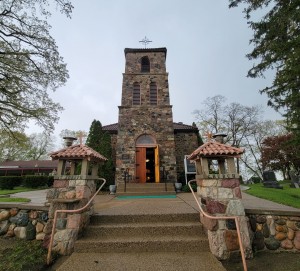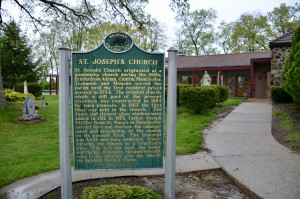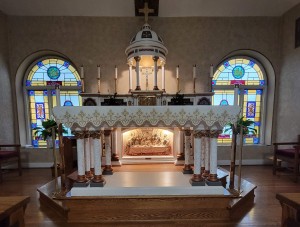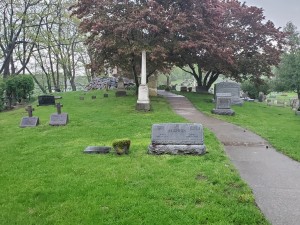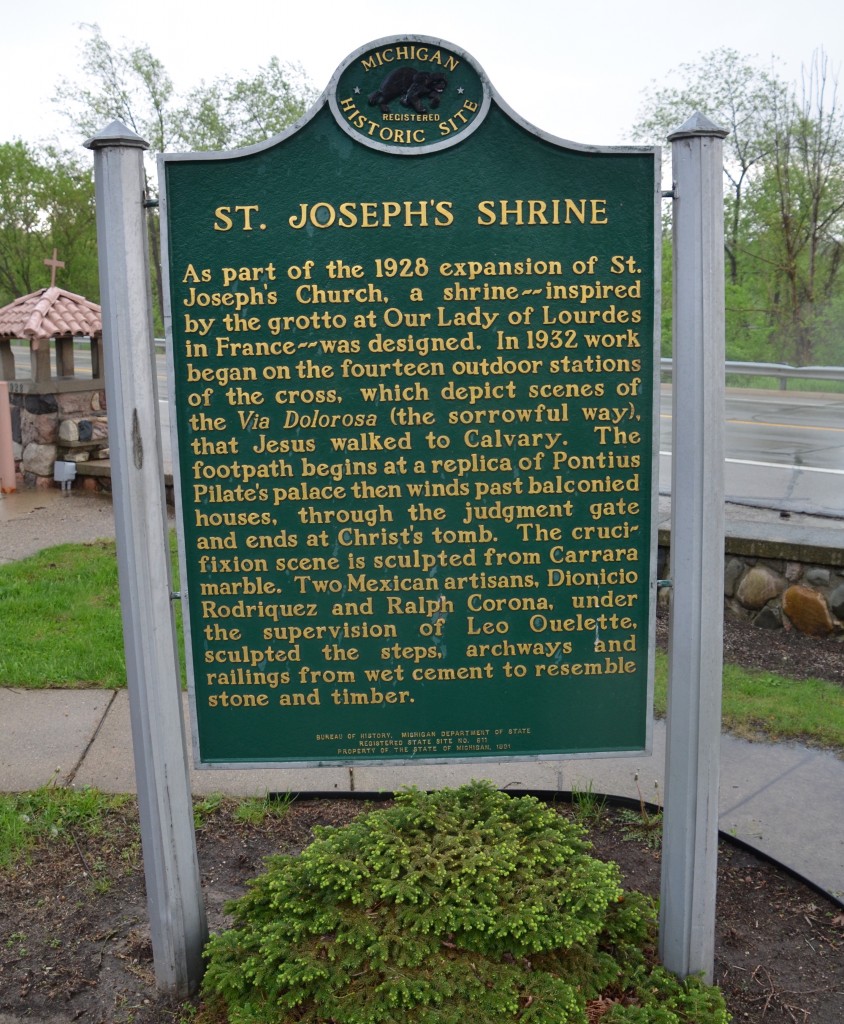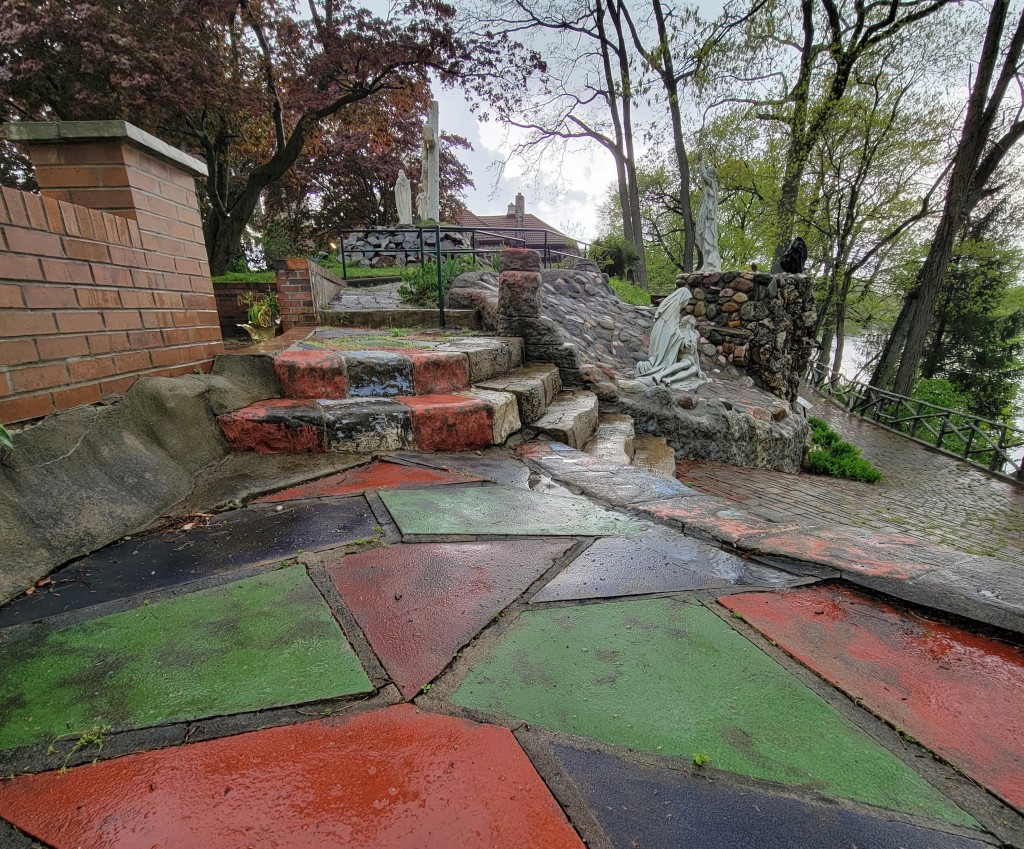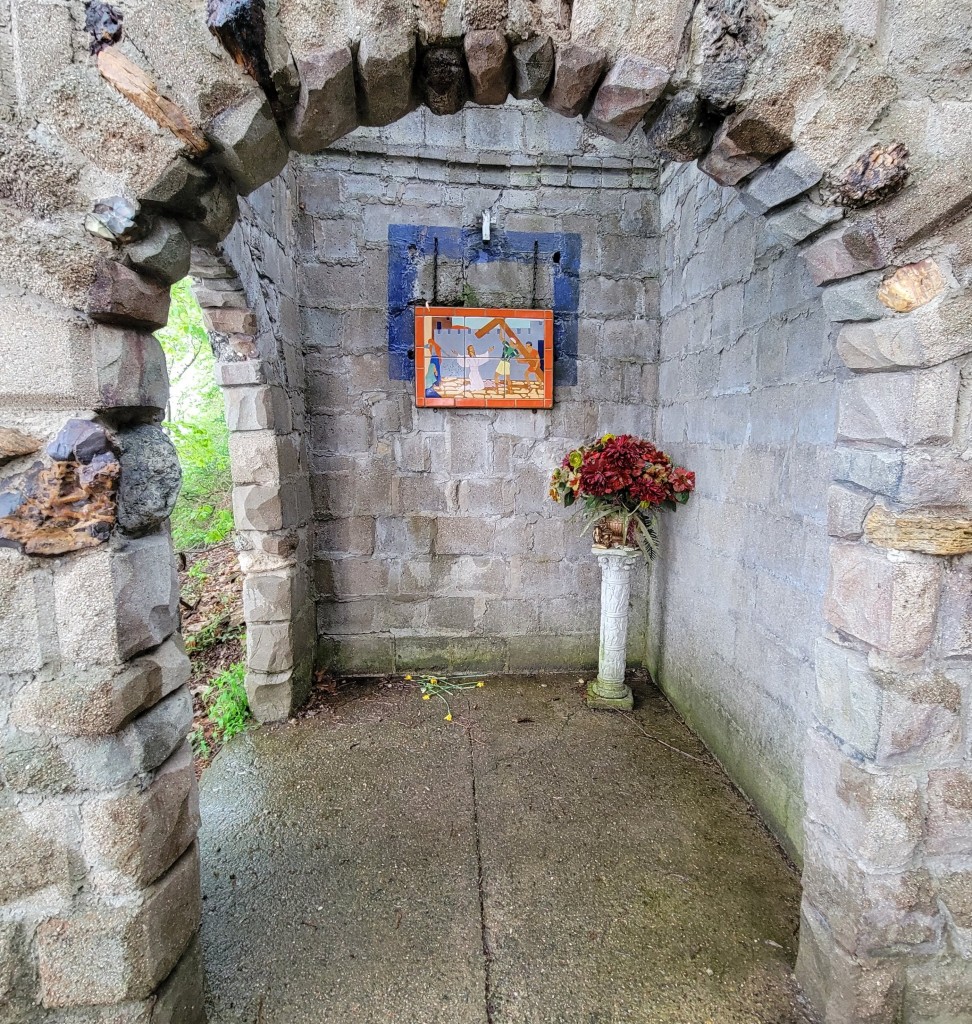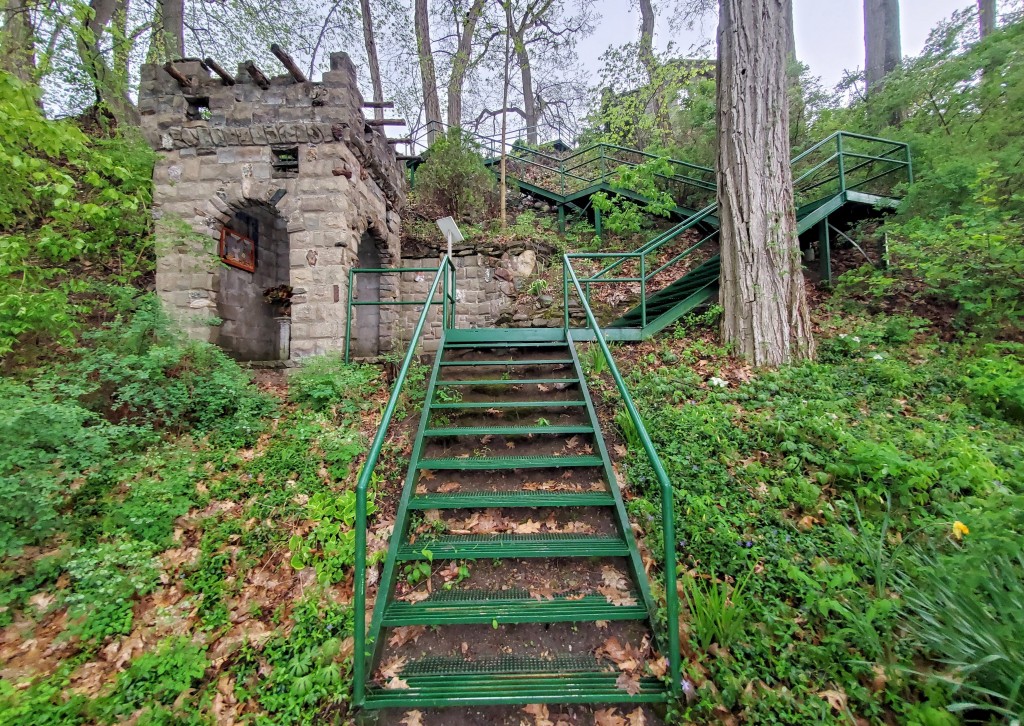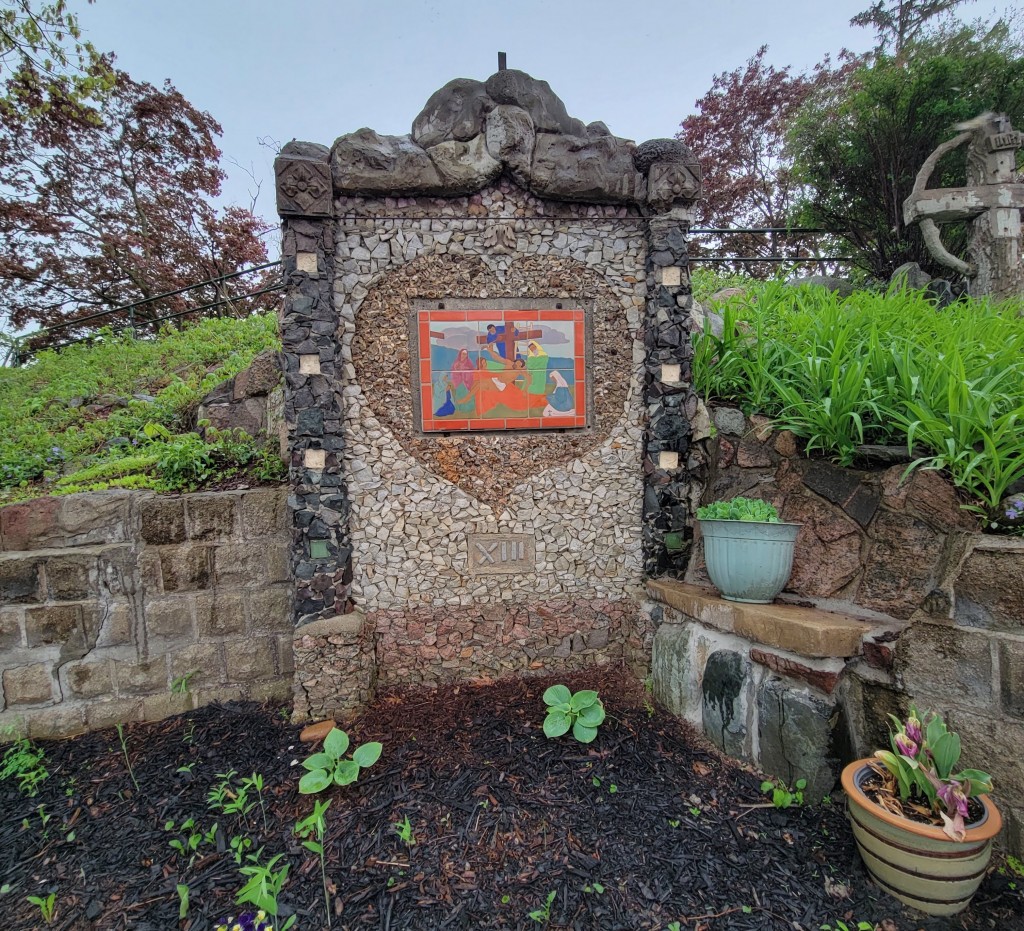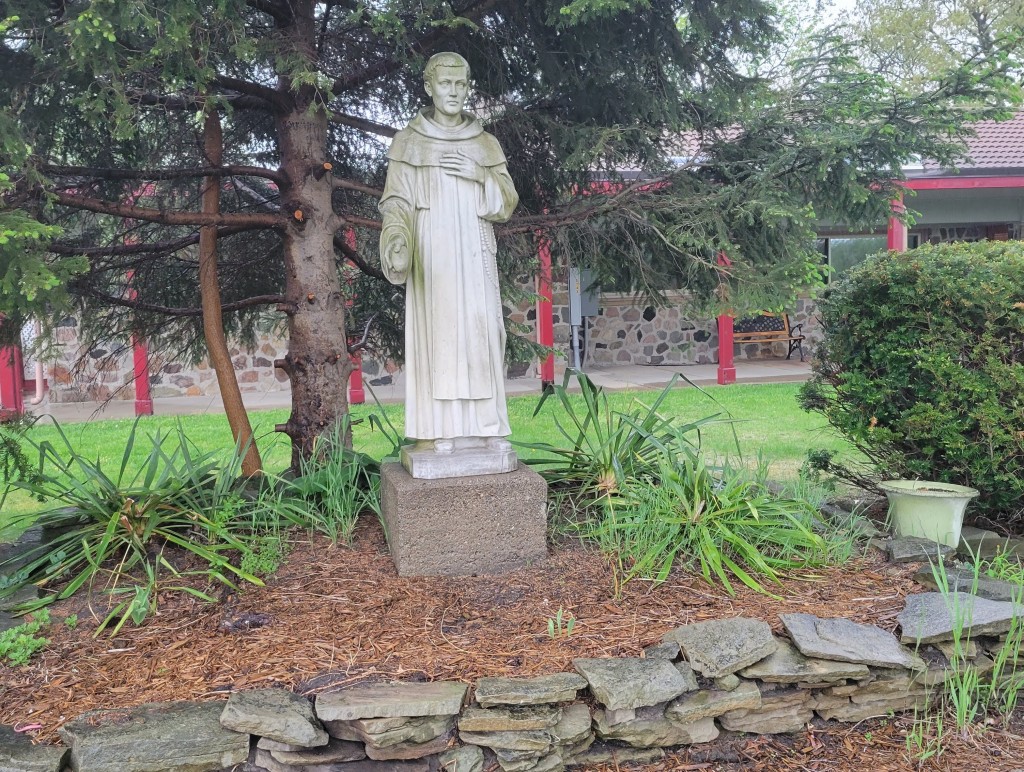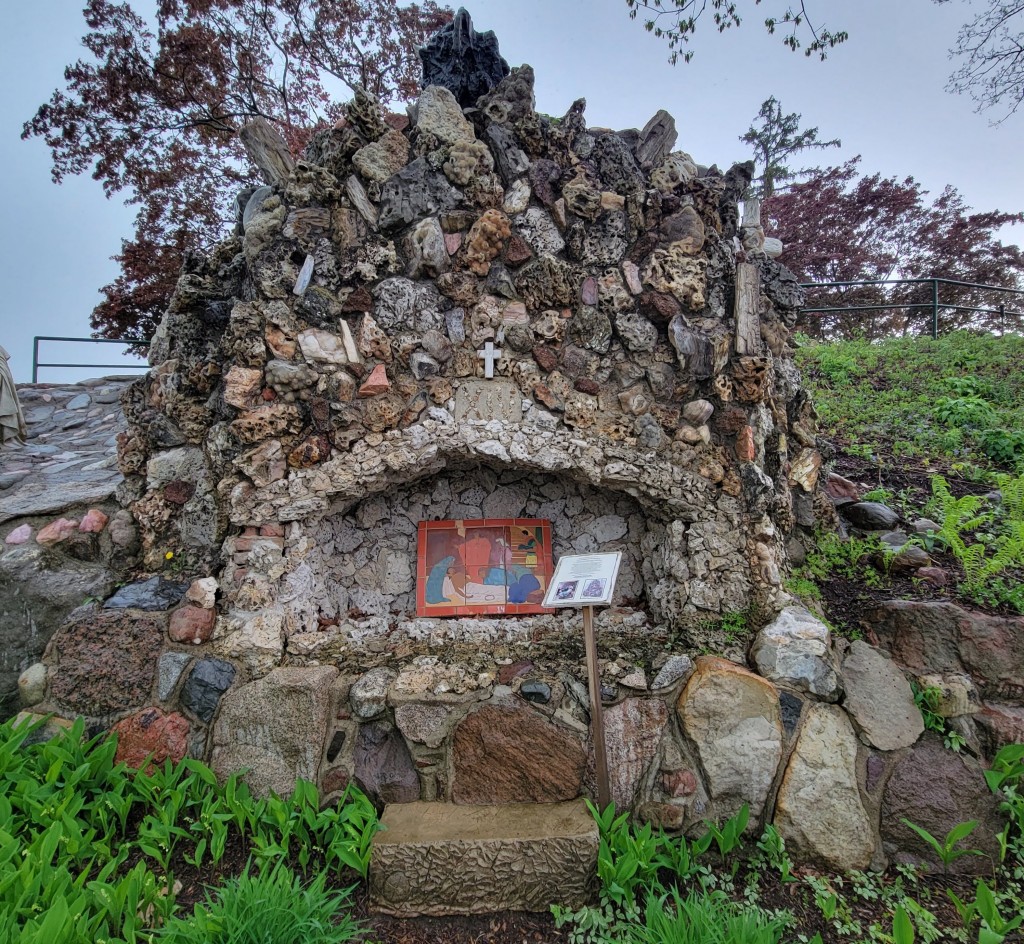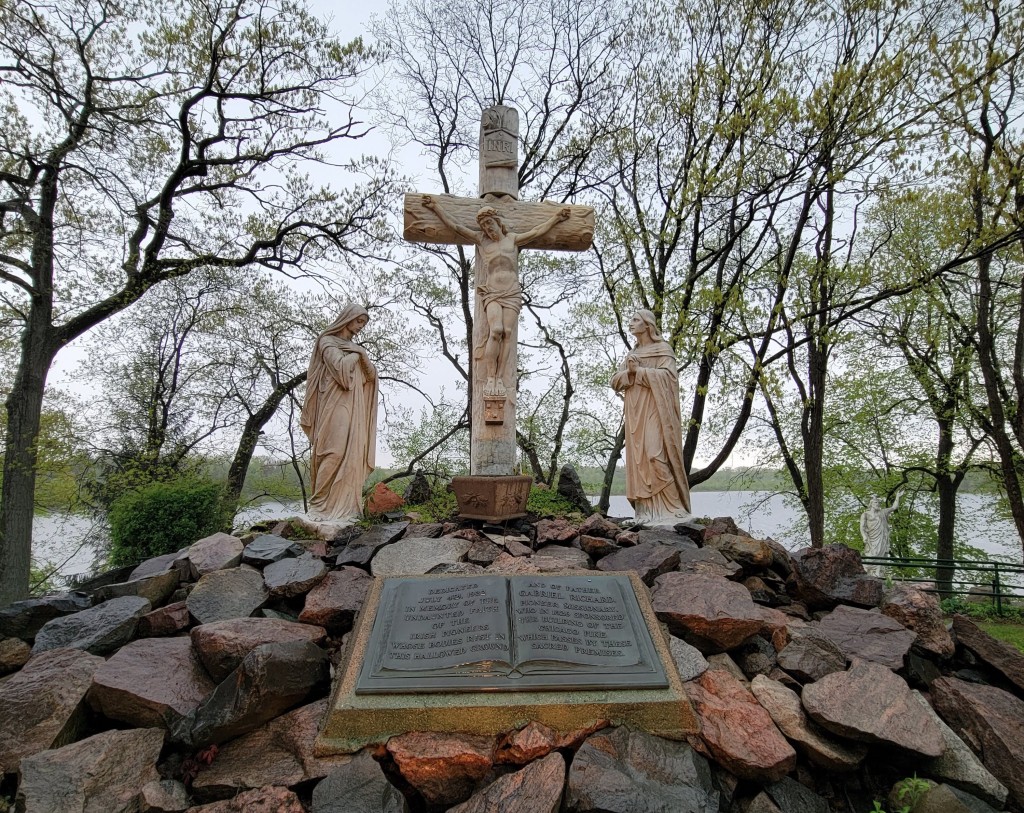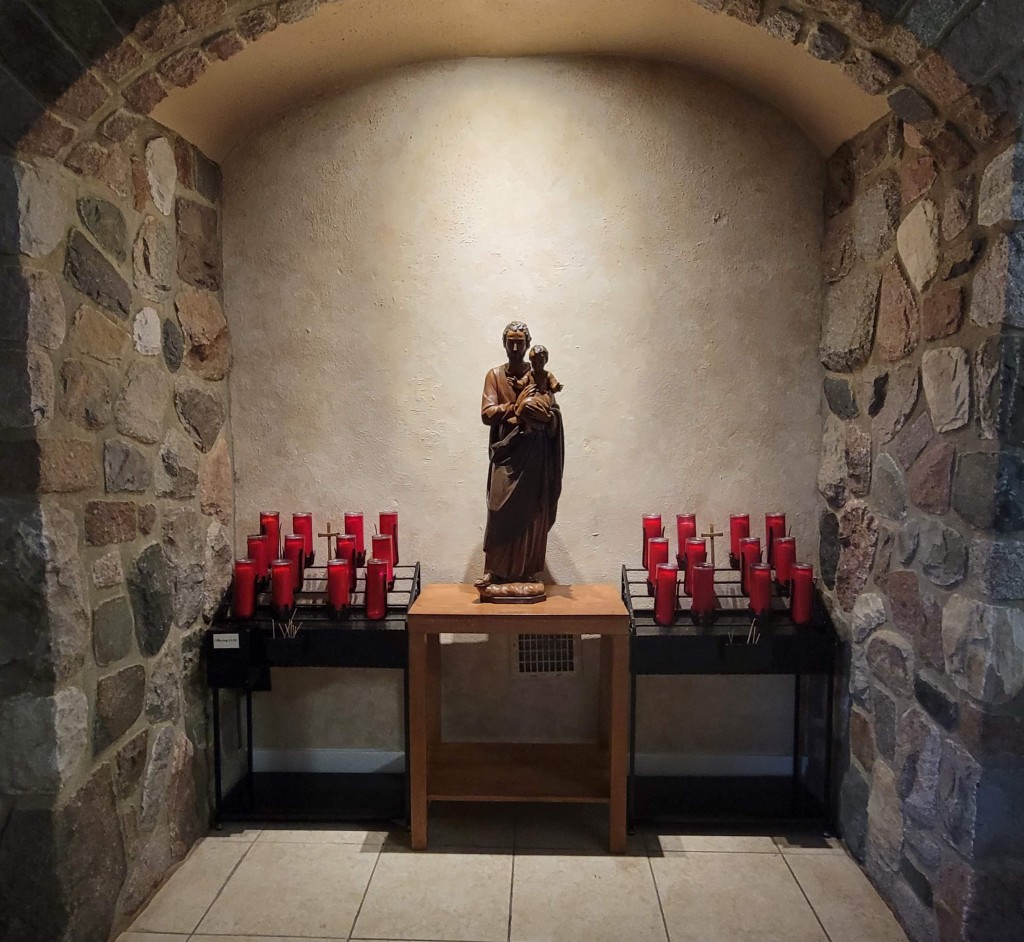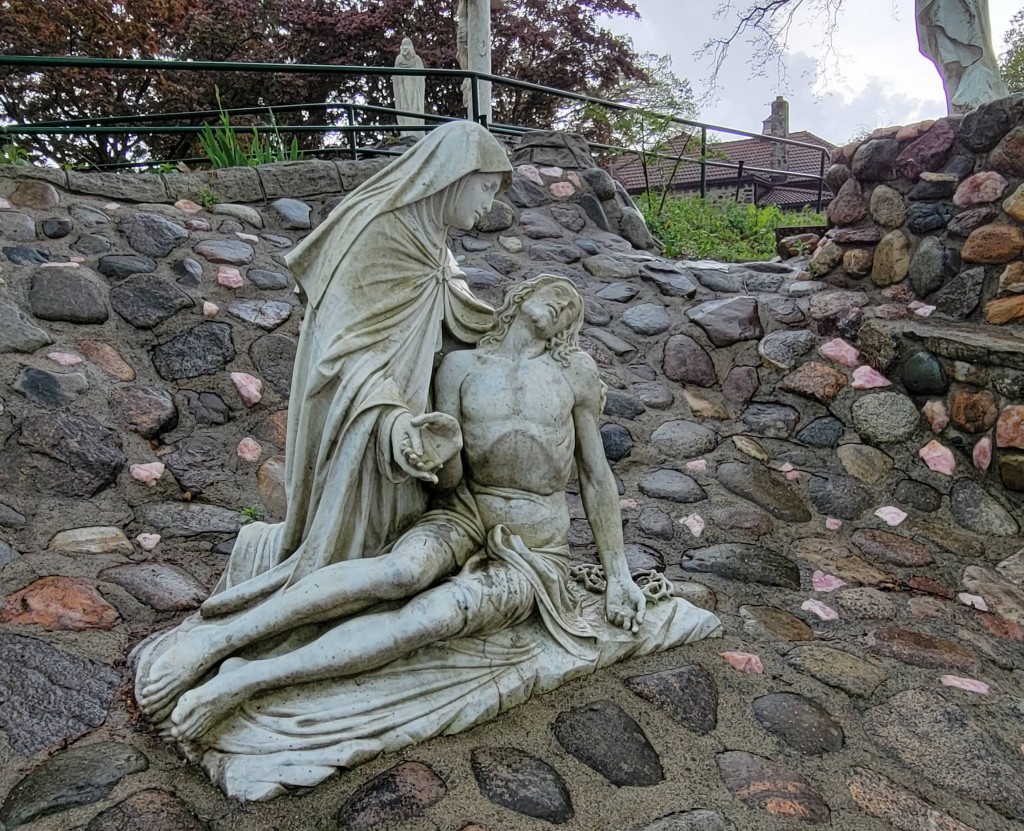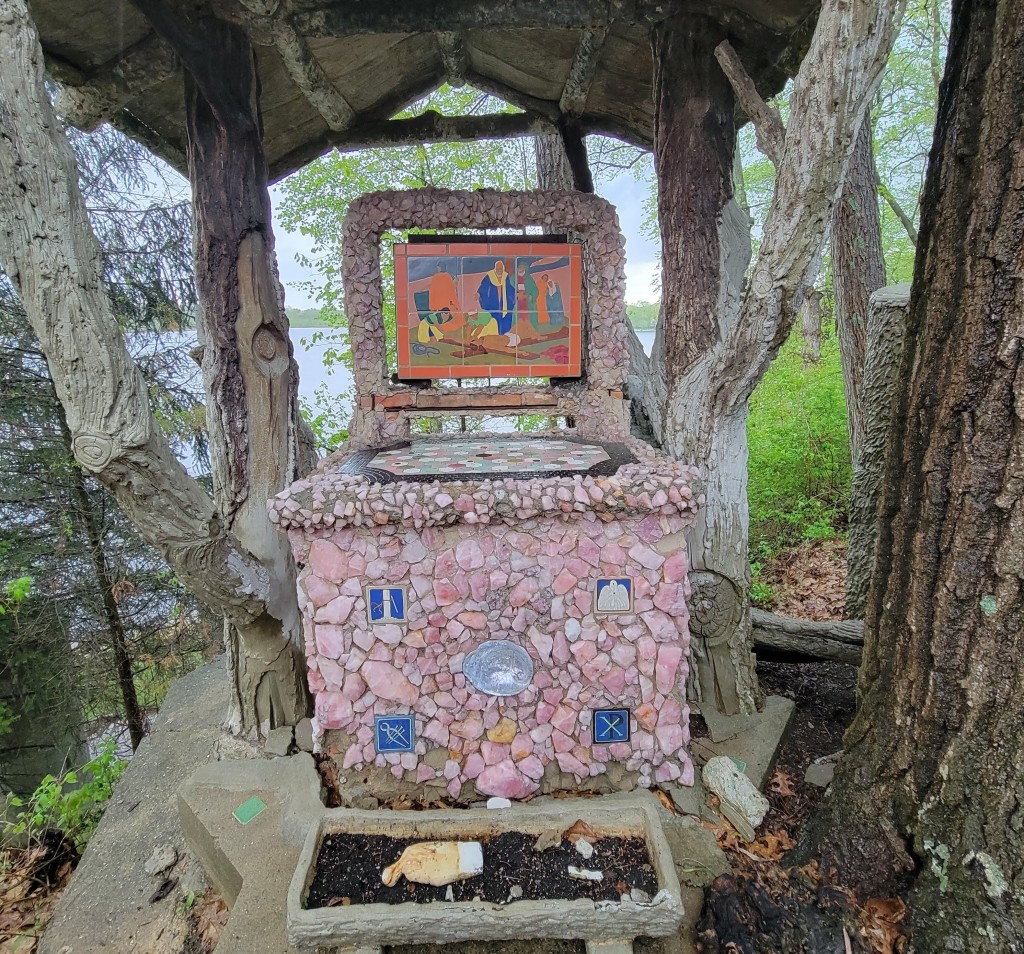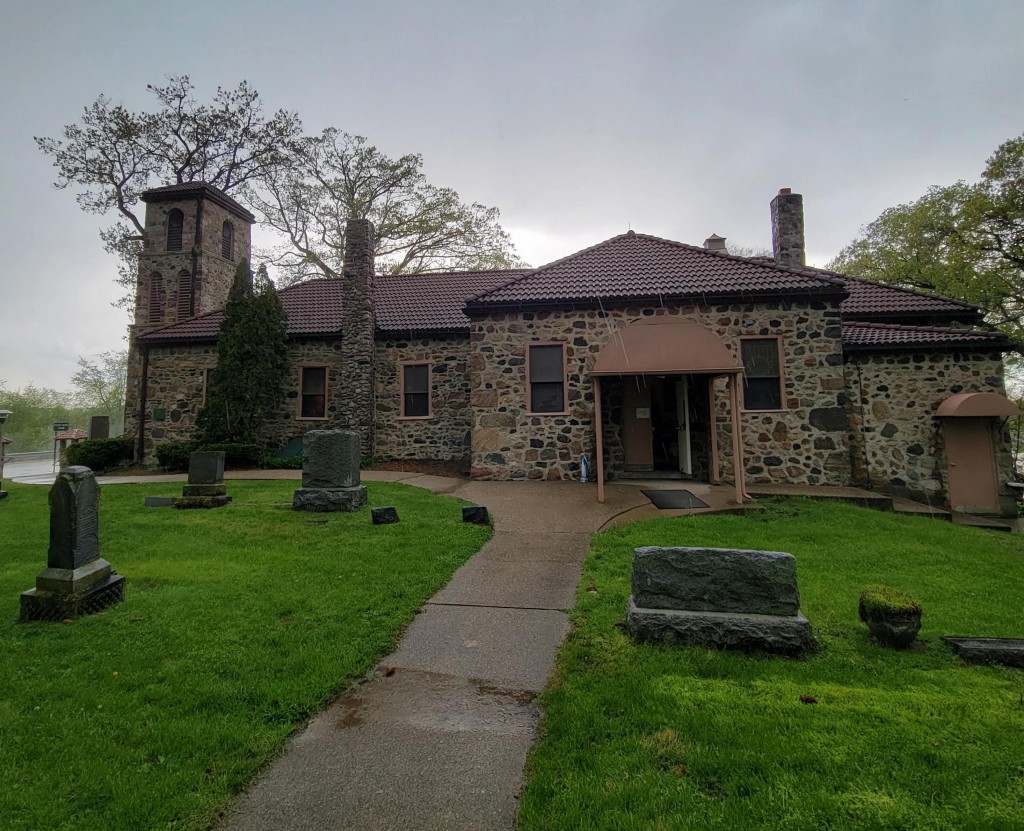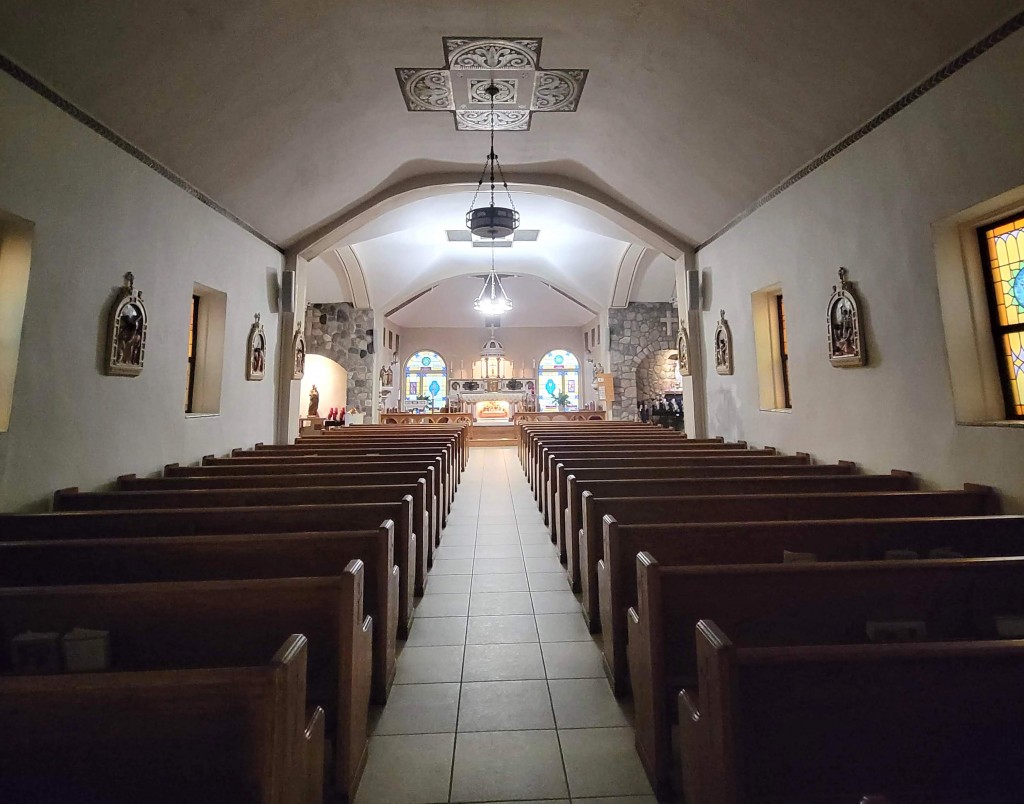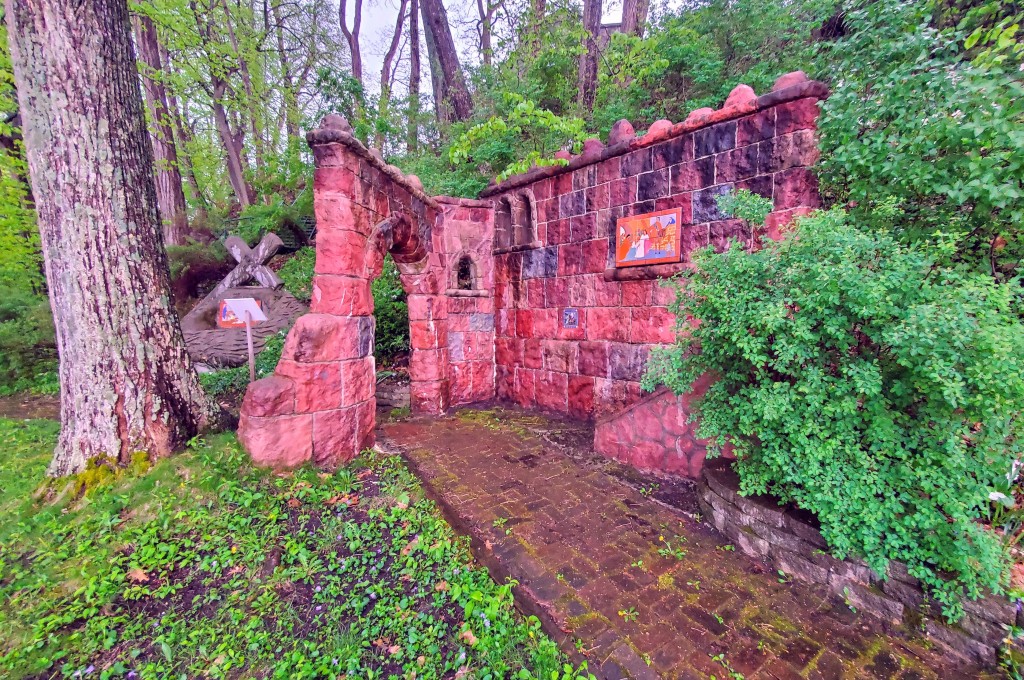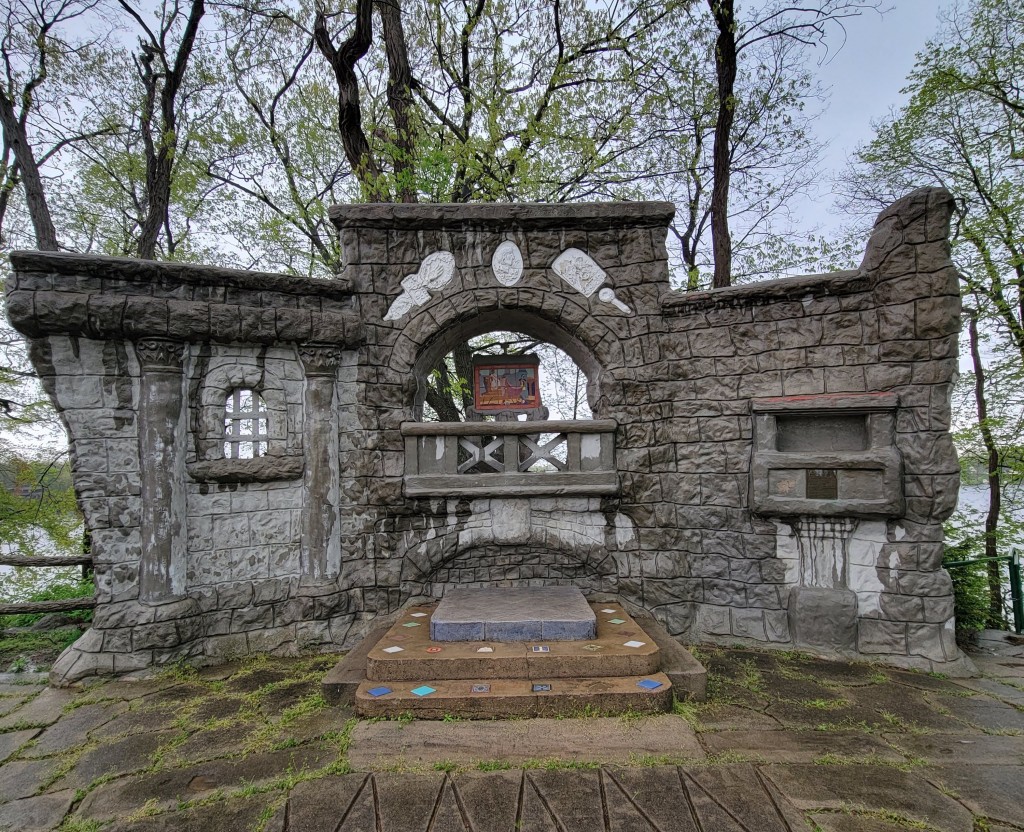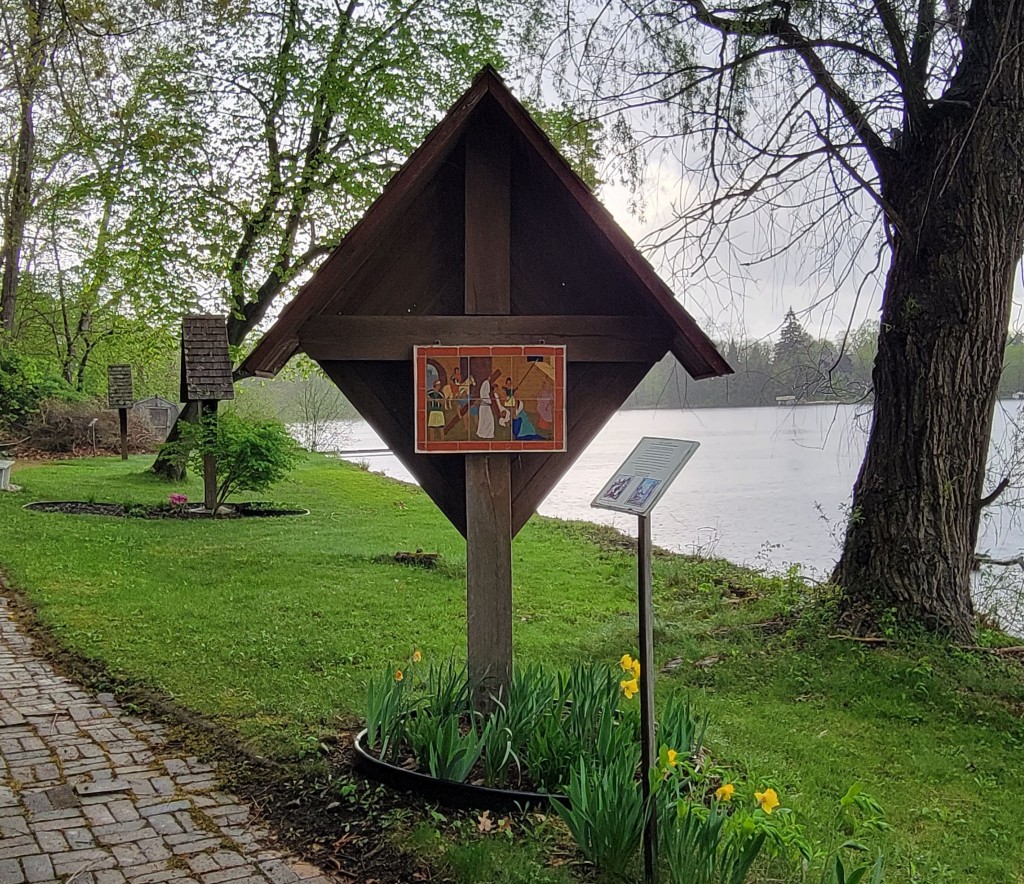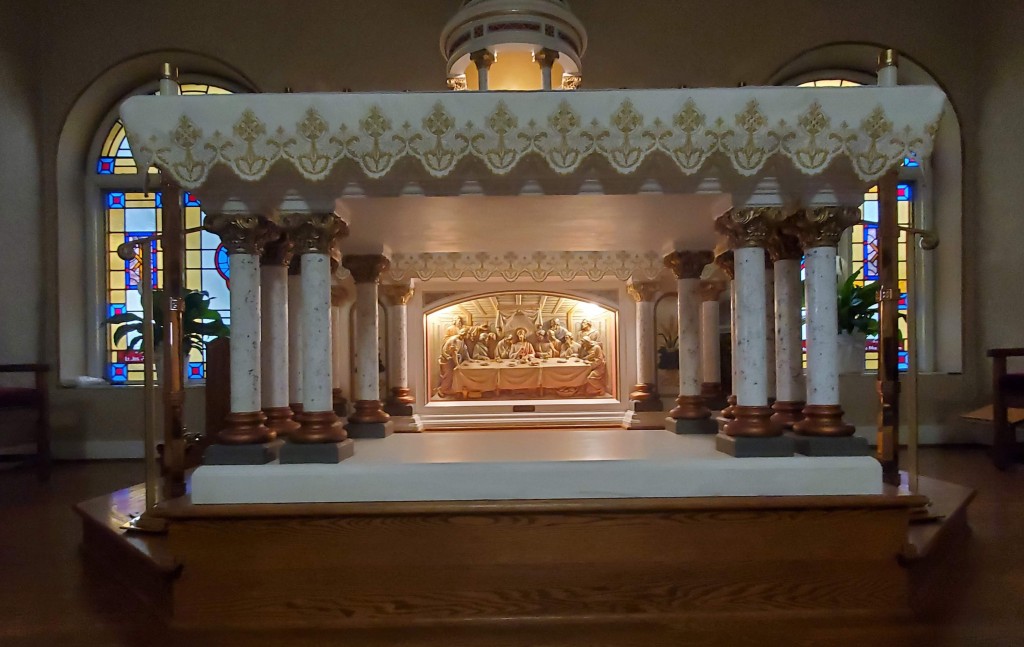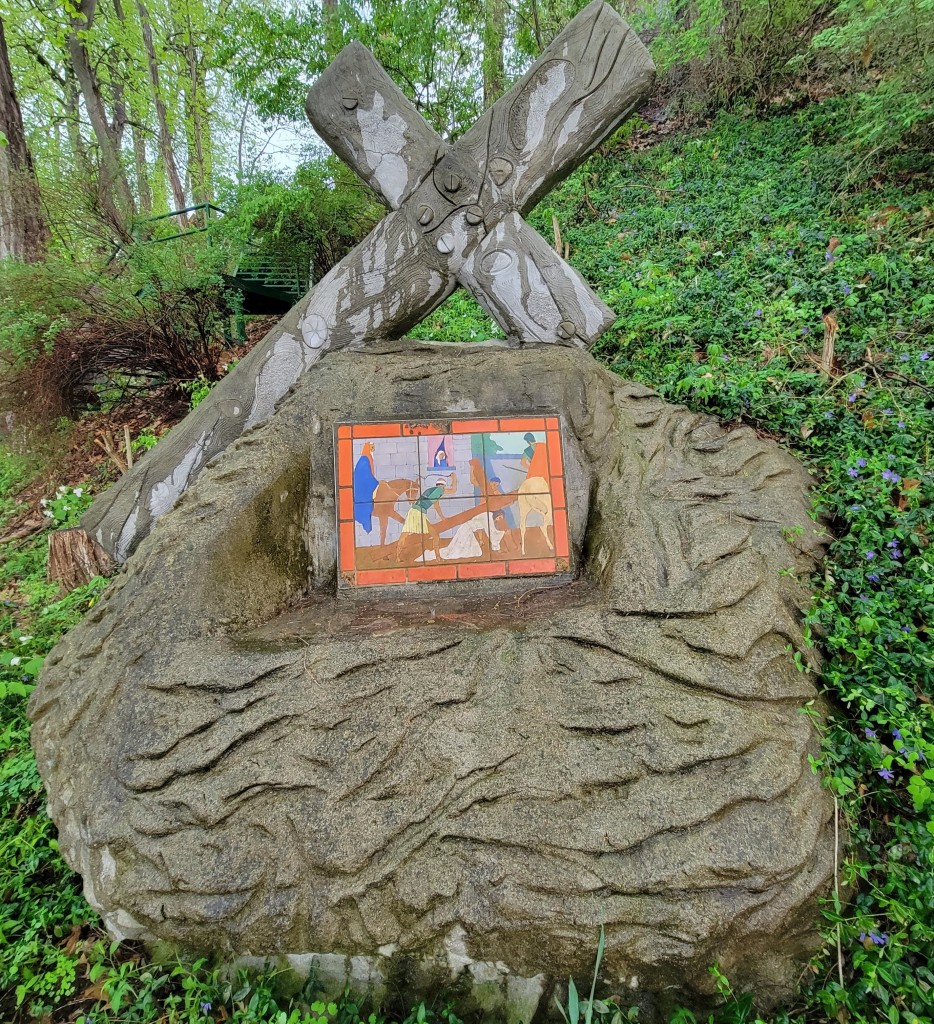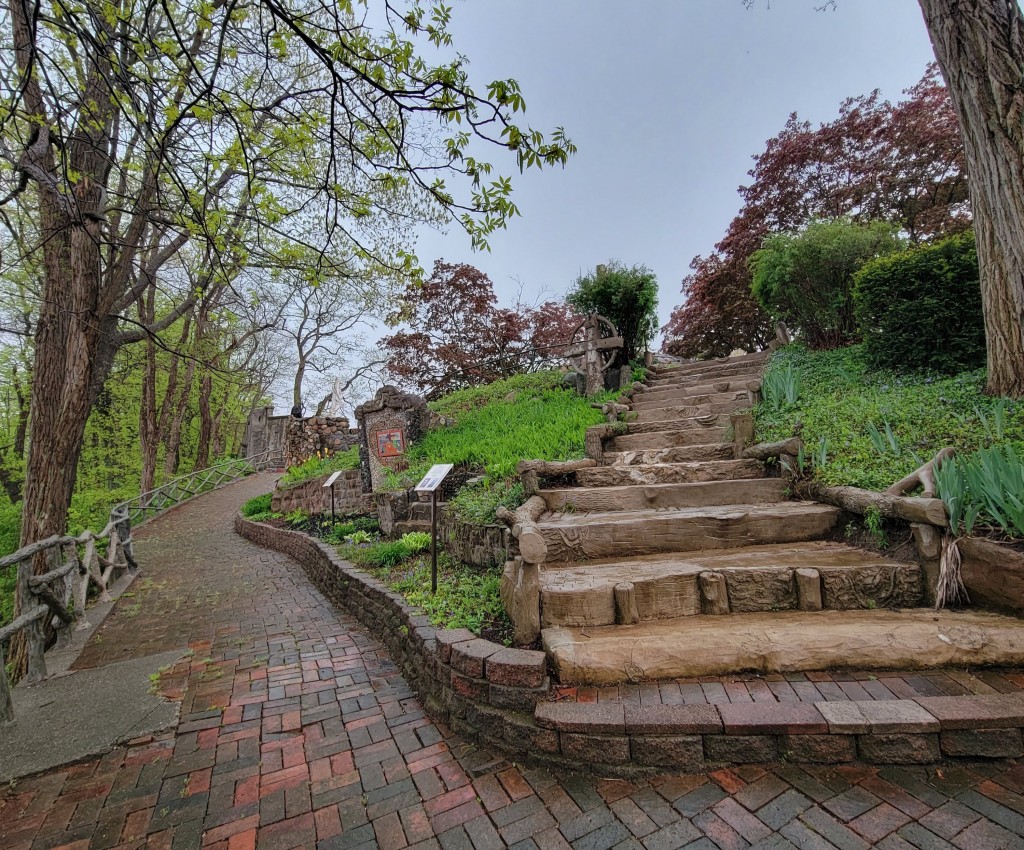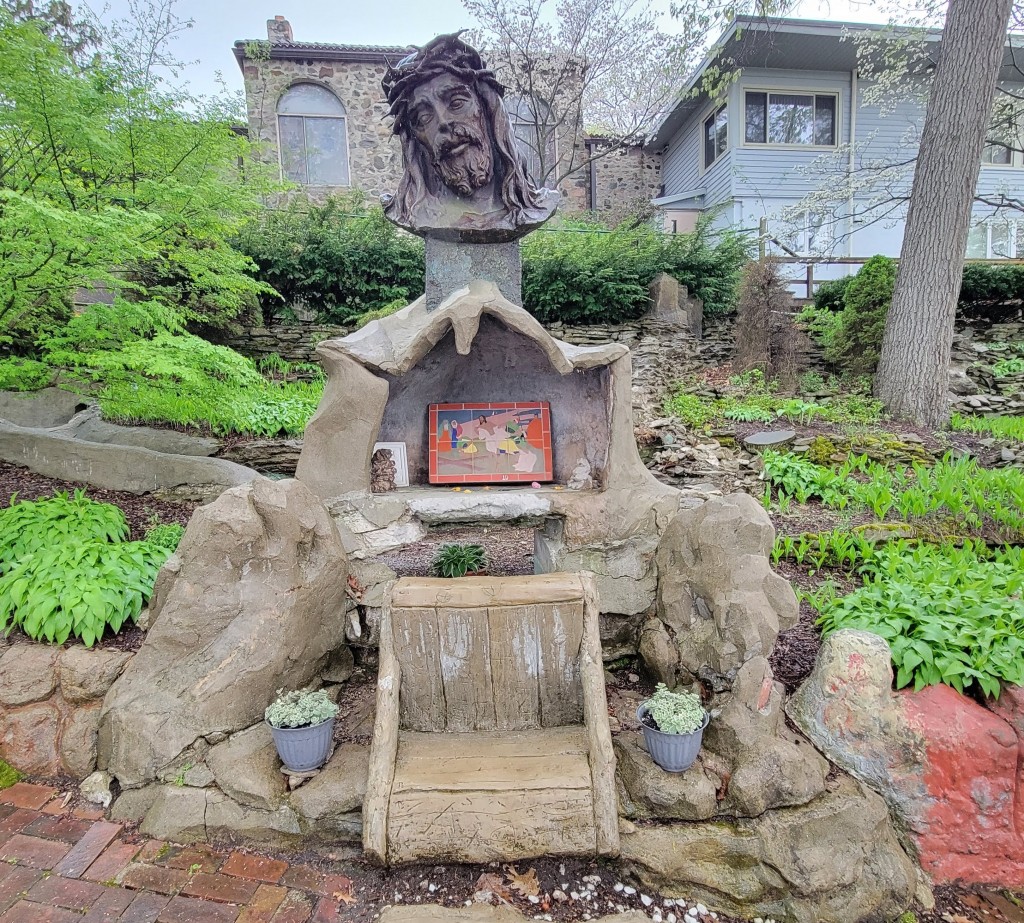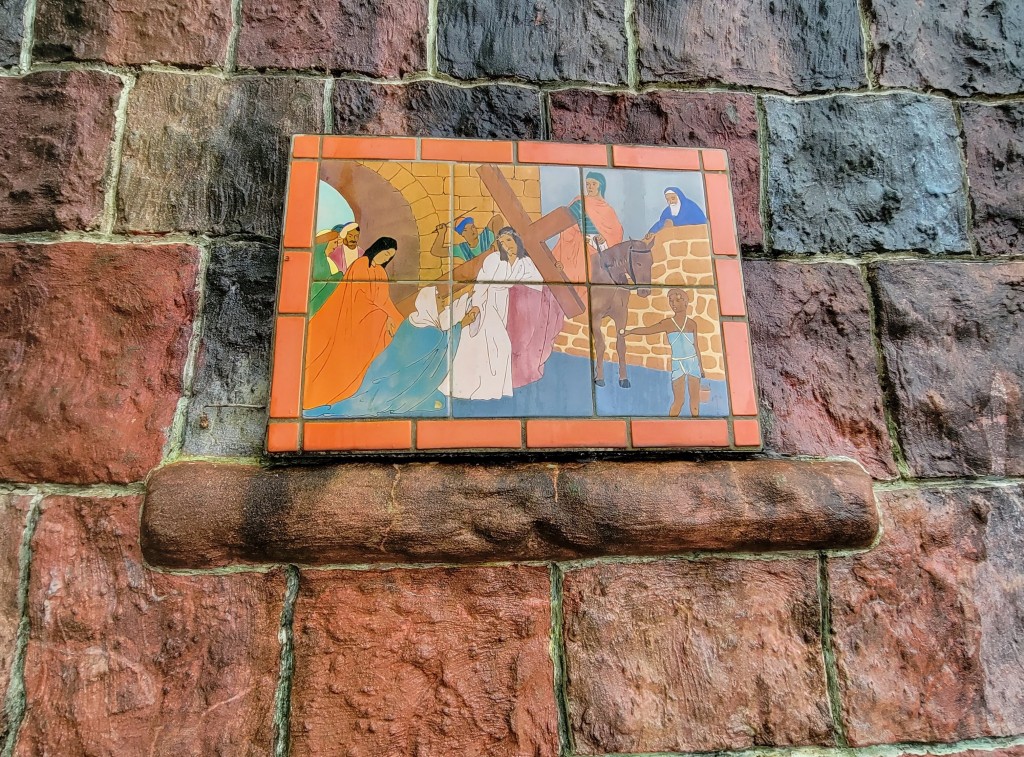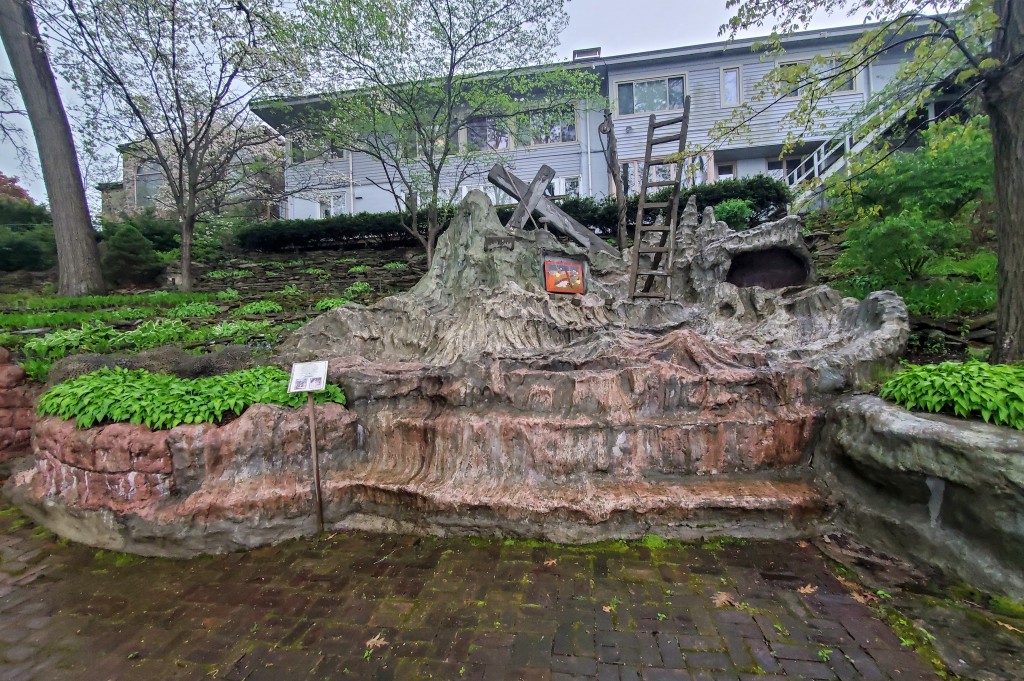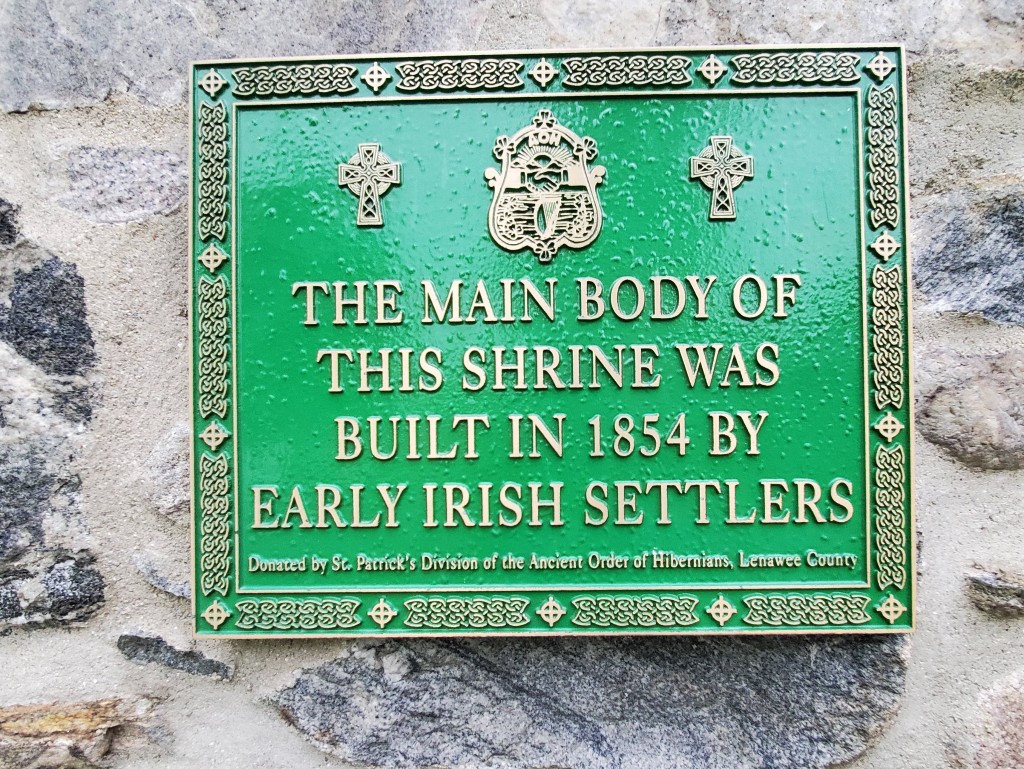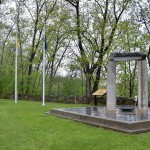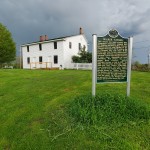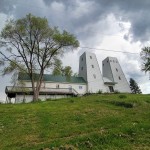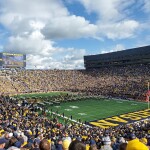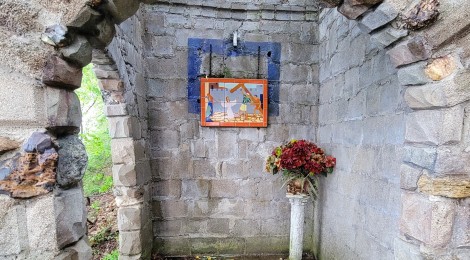
Saint Joseph Shrine – Stop at This Beautiful Church on the U.S. 12 Heritage Trail
The U.S. 12 Heritage Trail follows the second federal highway from the southwest corner of Michigan all the way across the state to Detroit. As it passes through Lenawee County and the Irish Hills the Saint Joseph Shrine and church sits on the north side of the road, and it is worth a stop here to experience the history, construction, and beautiful art at this historic site. The Spanish mission style church building and unique “trabajo rustico” constructed grotto and stations of the cross make this a unique stop here in Michigan.
A Michigan historical marker in front of the church building details its early history: “St. Joseph’s Church originated as a missionary church during the 1850s. Priests from Adrian, Clinton, Manchester, Tecumseh and Monroe served the parish until the first resident priest arrived in 1954. The original church, which is still part of the present structure, was constructed by Irish pioneers. In 1863 the first Mass was held in the church, The tower and stained-glass windows were added in 1911. In 1928, Father Joseph Pfeffer from St. Mary’s in Manchester served here and oversaw the enlargement and remodeling of the church to its present form. The transept was built and nave enlarged, transforming the church to a cruciform plan. The red tile roof, the tower and the use of mosaic, tile and wrought iron in the interior give the church its Spanish Mission flavor.”
Our visit took place during a downpour and the chance to stay dry while checking out the inside of the church made that our first stop. The beautiful stained glass windows and stunning altar were two of the first things that caught our attention. It is very peaceful inside this chapel.
Once the rain let up we headed outside. There is a cemetery on the grounds where some of the area’s early residents are buried. We were curious to check out the outdoor stations of the cross, which was added to the church in 1932: “As part of the 1928 expansion of St. Joseph’s Church, a shrine — inspired by the grotto of Our Lady of Lourdes in France — was designed. In 1932 work began on the fourteen outdoor stations of the cross, which depict scenes of the Via Dolorosa (the sorrowful way), that Jesus walked to Calvary. The footpath begins at a replica of Pontius Pilates’s palace then winds past balconied houses, through the judgment gate and ends at Christ’s tomb. The crucifixion scene is sculpted from Carrara marble. Two Mexican artisans, Dionicio Rodriguez and Ralph Corona, under the supervision of Leo Ouelette, sculpted the steps, archways and railings from wet cement to resemble stone and timber.” This style of construction will immediately look familiar to anyone who has been to the W.H.L. McCourtie Estate and park down the road in Somerset Center.
Below is a photo gallery of the church and shrine that shows the detailed construction. This was a great stop on our journey through the Irish Hills and one of the more inspiring churches we’ve visited. If you plan on making a trip on the U.S. 12 Heritage Trail, consider setting aside a few minutes to visit the Saint Joseph Shrine and church!

